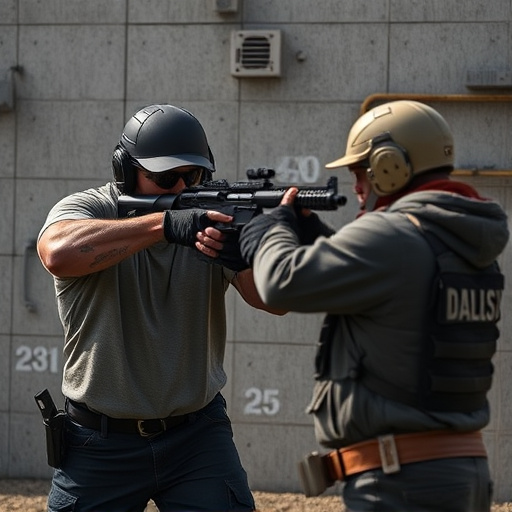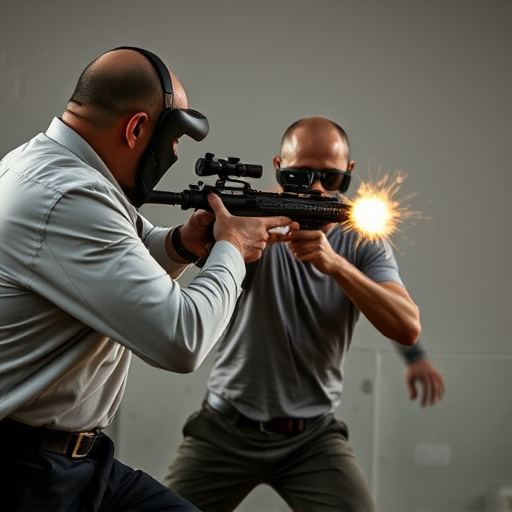This text examines the temporary muscle paralysis caused by stun guns (electronic control devices – ECDs), which have an average incapacitation duration of 3-15 seconds, varying based on factors like device power and target's body size. While these legal stun weapons offer a crucial window for safety, repeat shocks may be needed as bodies can adapt. Understanding regional laws governing their possession and use is vital; the growing market has led to increased regulatory scrutiny. The effectiveness of stun guns depends on electrical output, pulse width, target body composition, and environmental conditions. Advanced design and quality ensure more predictable and prolonged incapacitation times, making them among the most powerful legal stun weapons available.
“Uncover the intriguing world of muscle incapacitation caused by stun guns and their impact on self-defense. This article delves into the science behind these devices, focusing on understanding how long stun gun effects last. We explore the concept of ‘most powerful legal stun weapons’ and analyze factors that influence their duration. From legal considerations to practical applications, this comprehensive guide provides insights for those seeking effective personal protection. Discover the potential of these tools in various scenarios.”
- Understanding Muscle Incapacitation: How Long Do Stun Guns Take Effect?
- Legal Considerations: Exploring the Use of Most Powerful Legal Stun Weapons
- Factors Influencing Duration: A Comprehensive Analysis
Understanding Muscle Incapacitation: How Long Do Stun Guns Take Effect?

Understanding Muscle Incapacitation: How Long Do Stun Guns Take Effect?
Stun guns, also known as electronic control devices (ECDs), are designed to temporarily incapacitate individuals through electrical impulses that disrupt muscle control. When a stun gun is deployed, it delivers a powerful electric shock that can cause the targeted muscles to spasm and freeze up, rendering the subject immobile for a brief period. The duration of this muscle incapacitation varies depending on several factors, including the power output of the stun gun, the target’s body size, and their physical condition.
Among the most powerful legal stun weapons available, modern ECDs can induce muscle incapacity for anywhere from 3 to 15 seconds on average. This temporary paralysis gives users a crucial window to gain control of a situation or escape potentially dangerous circumstances. However, it’s important to note that repeat shocks are typically required to maintain incapacitation, as the body may begin to adjust to the initial jolt after several seconds.
Legal Considerations: Exploring the Use of Most Powerful Legal Stun Weapons

When it comes to understanding muscle incapacitation durations from stun guns, legal considerations are paramount. The use of stun devices, especially the most powerful legal stun weapons, is a complex matter due to varying regional and national laws. These regulations dictate who can possess such devices, under what circumstances they can be employed, and the specific power outputs allowed.
The market for most powerful legal stun weapons has grown significantly, fueled by concerns over personal safety and self-defense. However, this growth has also led to increased scrutiny from law enforcement agencies and regulatory bodies. Consumers must navigate a labyrinth of laws to ensure they are using these devices responsibly and legally. Understanding the specific regulations in your area is crucial before investing in or employing any stun weapon, especially those classified as the most powerful legal stun weapons available.
Factors Influencing Duration: A Comprehensive Analysis

The duration of muscle incapacitation caused by stun guns is influenced by a myriad of factors, each playing a crucial role in determining the weapon’s effectiveness. Among the most significant variables are the stun gun’s electrical output and pulse width—higher wattage and narrower pulses generally result in longer durations of muscle paralysis. The target’s body type, physical fitness, and fat-to-muscle ratio also come into play; individuals with higher muscle mass relative to fat tend to experience longer incapacitation times.
Additionally, environmental conditions can impact the duration. For instance, cold temperatures can slightly enhance the effects due to reduced blood flow, while humidity might affect how quickly the current dissipates from the body. The stun gun’s design and quality are other critical factors; advanced models with precise control over electrical delivery tend to offer more predictable and extended durations of muscle incapacitation, making them among the most powerful legal stun weapons available.
In understanding muscle incapacitation from stun guns, it’s clear that the duration of their effect varies based on several factors. While the most powerful legal stun weapons can deliver potent jolts, the specific length of immobilization remains unpredictable and depends on individual reactions. Legal considerations further complicate matters, emphasizing the need for responsible use and training. Despite these variables, comprehensive analysis of these factors can help users make informed decisions when considering the application of stun weapons as a last resort for self-defense.
